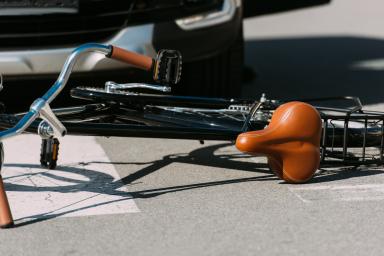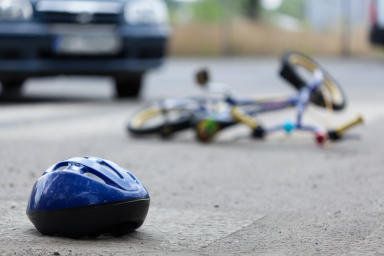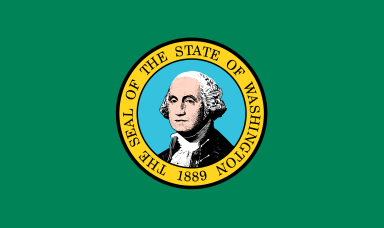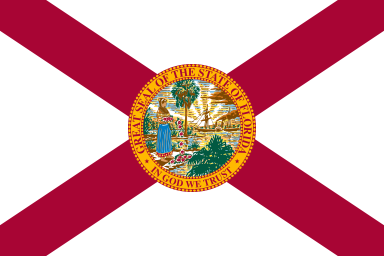New York Bicycle Laws
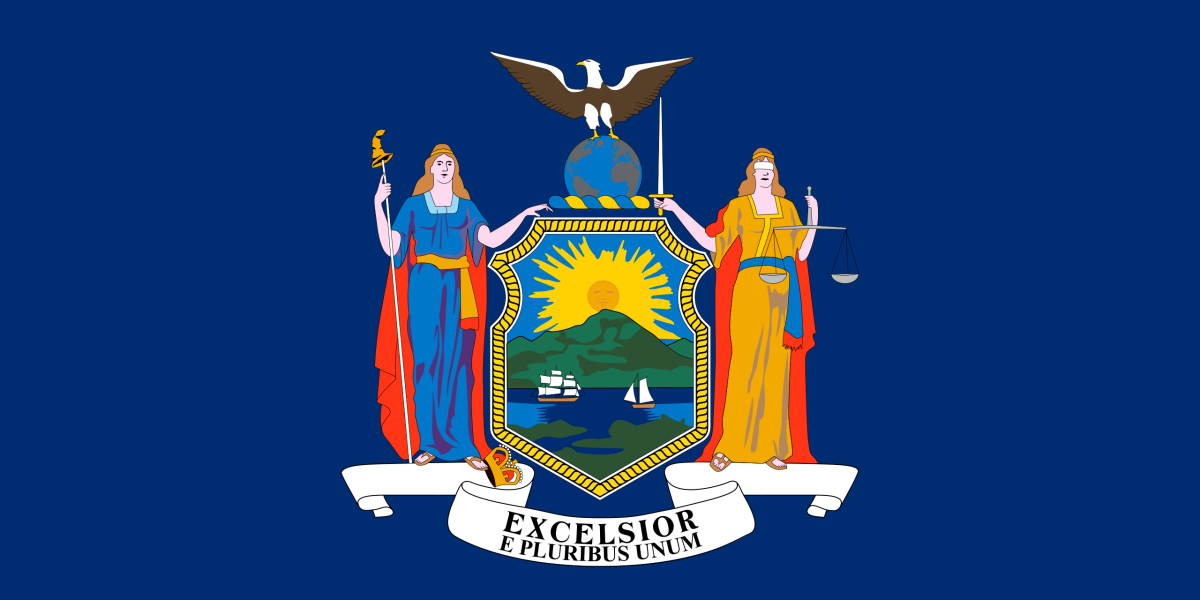
Nothing is as lovely as riding a bicycle on a crisp fall day in New York. Cycling is one of the best ways to travel around New York City. Biking is efficient, affordable, equitable, healthy, and environmentally friendly, but bicycling can be dangerous if you don’t know the rules of the road. Below is a list of the general laws and regulations cyclists should be aware of before riding around the Big Apple. Keep in mind that specific counties may have different regulations, so it’s always a good idea to research where you’re riding to make sure you stay in compliance with local legislation.
Riding the Road
In New York, a bicycle is a legal vehicle, just like a car. When riding the roadway, bicyclists have the same rights and responsibilities as drivers. Bicyclists, just like motorists, can be ticketed for not abiding by New York’s traffic regulations. Cyclists are required to keep at least one hand on the steering device or handlebars when operating a bicycle. Likewise, no person riding a bike can carry any article that prevents the driver from keeping a hand on the handlebars.
Bicyclists in New York are allowed to ride side by side, with no more than two abreast at any time. However, only one rider is allowed per bicycle seat. Cyclists must also use proper hand signals when turning or decreasing/stopping speed.
Cyclists should pay special attention to signs since bicycles are prohibited on highways, expressways, interstate routes, bridges, and thruways unless authorized by signs. In New York City, bicycles are only allowed in designated parks and on authorized sidewalks. New York City has specific laws that allow riders twelve years and younger to ride bikes on a sidewalk, but other municipalities have different regulations.
No Stop Zones
In New York, there are specific “No Stopping Zones,” like you’d find at your local airport, where vehicles are prohibited from stopping, standing, or parking a vehicle in any bike lanes. Motorists are under strict rules to avoid blocking a cyclist’s right of way except when it is reasonable and necessary, such as when a driver is entering or leaving a driveway, a legal curbside parking space, crossing an intersection, or complying with the direction of law enforcement.
Bright Lights
In New York, bicycles need to be outfitted with specific equipment to be street-legal. Working brakes are required in New York, as are reflective devices to ensure bicyclists can be seen at night. Every bicycle must have a permanent seat with pedals and can only carry the number of persons it was designed for. The bike must have a white headlight and red taillight that are fully operable from dusk to dawn. Reflective devices are required on all bicycles in use thirty minutes after sunset and thirty minutes before sunrise, so other motorists can easily detect operators.
Earphones while Riding
Riders are prohibited from wearing headphones while riding and cannot wear more than one earphone attached to an audio device. It’s illegal for any rider to operate a bicycle, motor vehicle, limited-use automobile, or motorcycle while wearing more than one earphone attached to a radio, tape player, or other audio device.
Brakes, Please
Every bike in New York must be equipped with a brake that can skid on dry, level, and clean pavement to a complete stop.
Helmets & Children on Bikes
New York has specific guidelines for children riding bikes. A child younger than year one is not permitted to ride on a bicycle. Additionally, children under one are prohibited from being transported on a bike. Children between the ages of one and five years old are required to wear an approved helmet and be carried in a properly affixed child carrier. Children older than five years but under the age of fourteen years of age must wear a certified helmet. If a parent or guardian permits their child to violate the helmet laws, they’re subject to a fine of up to $50.
However, keep in mind that there are certain communities that have passed local ordinances regarding helmet use for cyclists, no matter their age. In Rockland and Erie counties, bicyclists must wear certified bicycle helmets regardless of age.
Safe Passing
All motorists are expected under New York law to drive on the right side of the roadway, except when passing another vehicle or cyclist traveling in the same direction. All operators of vehicles attempting to pass to the left of a cyclist must do so at a safe distance and until safely clear. It’s the responsibility of the driver or any vehicle to exercise due care to avoid potential collisions and provide warning by sounding the horn when necessary.
Right of Way
It’s a motorist’s responsibility to yield to a pedestrian or bicyclist who has the right of way. If a motor vehicle driver fails to yield to another driver with the right of way, they can be subject to a civil penalty in addition to traffic infraction penalties. If a driver does cause contact with a pedestrian or bicyclist causing personal injury, the driver can be held responsible for committing a misdemeanor as provided by the law.
Reporting Accidents
Any cyclist involved in a collision that results in injury or death to a person or damage to property is required to stop and provide their name, address, and liability insurance coverage to the other party. You must also report the accident to the nearest police station unless an officer is already on the scene.
How Much Can Someone Sue For a Bike Accident in New York?
In New York, there’s no cap on the amount of compensation you can receive for the pain and suffering you endure. Therefore if you’ve been injured, it’s important to keep track of any medical expenses or economic damages, so that you can calculate fair compensation.
The Statute of Limitations in New York
In New York, Personal Injury lawsuits have a three-year statute of limitations where if the injured party does not file a lawsuit against the at-fault party within that time frame, the court can dismiss your case. New York requires that specific criteria are met to qualify for a personal injury lawsuit. Under New York law, the claimant must have sustained a “serious injury,” like a fracture, loss of a fetus, or significant disfigurement, to file a personal injury lawsuit. Go here for more about what qualifies in New York’s serious injury threshold.
If you were in an accident with a motor vehicle owned or operated by a municipality, a local town, or county, you have ninety (90) days to file a Notice of Claim. If a Notice is not filed during that time, the claimant may forever be barred from recovering financial compensation.
Is New York a no-fault state?
New York is a no-fault state, which means that those involved in an accident will have to rely on their own personal injury protection (PIP) policies to cover medical expenses and lost wages. PIP does not cover pain and suffering, which can make it more challenging to obtain compensation after a traffic collision. However, through a personal injury lawsuit, you can pursue additional compensation, like pain and suffering, if your case meets New York’s serious injury threshold.
According to New York's No-Fault law, lawsuits arising from motorist accidents can only be brought if a serious injury has been suffered and the economic losses exceed the No-Fault benefits. Non-economic damages may also include pain and suffering. No-Fault is a personal injury coverage, which means it pays first in the event injury is due to an auto accident, but it won’t pay for property damage. No-Fault personal liability coverage protects you and your household from economic losses. However, there are certain instances in which a person’s insurance policy would be deemed ineligible for No-Fault benefits. For example, if the driver were operating under the influence, committing a felony at the time, or is uninsured, the No-Fault benefits would not apply.
Legal Resources for New York Bicycle Accident Victims
Speaking with a licensed attorney can be invaluable if you’ve been seriously injured in an auto accident. However, many resources are available online if you need a complete list of New York’s bike laws or want to know where you can get a free helmet. To request a NYC Bike Map, visit a local NYC bike shop where they have free copies, or you can download the bike map online.
Helmet Fittings & Giveaways
New York City’s Department of Transportation (DOT) has partners and organizations across the city that host free helmet fittings and provide free helmets to New Yorkers. You can check out their Facebook Event page or contact NYC 311 to check for an event near you. Please be advised that all helmet fittings and giveaways follow special protocols to ensure the health and safety of all those in attendance. To find an event near you or read about how to fit a bike helmet properly, you can go here.
Insurance Coverage
For more information about the minimum coverages and insurance amounts that must be purchased to satisfy the legal and financial responsibility requirements to protect you in the case of an auto accident, go here. Even if your primary mode of transportation is a bicycle, being properly insured against collisions and injuries is one of the most important steps to ensuring your safety and health on the roadways. In the event of an accident, your policy will pay you while you recover from your injuries.
Low Vision or Blind Pedestrians
In New York City, there’s over 175,000+ low vision or blind pedestrians traveling in the city. Cycle Eyes is an organization committed to ensuring the safety of all its pedestrians and cyclists, regardless of their abilities. Cyclists should be on the lookout for pedestrians walking with guide dogs or red and white canes and should slow down, use their bells, and obey proper right of way. Following these few rules can help avoid injury and promote safer roadways:
Watch: Look out for people with long white and red canes or traveling with guide dogs. Remember, people with disabilities cannot always see or hear you or tell how far away you are.
Wait: Always let people walking go first and keep the crosswalk clear. Remember, pedestrians have the right of way on shared paths and Greenways. Do not ride up behind or around a guide dog and its owners.
Expertise.com StaffAuthor
Step into the world of Expertise.com, your go-to hub for credible insights. We don't take accuracy lightly around here. Our squad of expert reviewers, each a maestro in their field, has given the green light to every single article you'll find. From rigorous fact-checking to meticulous evaluations of service providers, we've got it all covered. So feel free to dive in and explore. The information you'll uncover has been stamped with the seal of approval by our top-notch experts.

